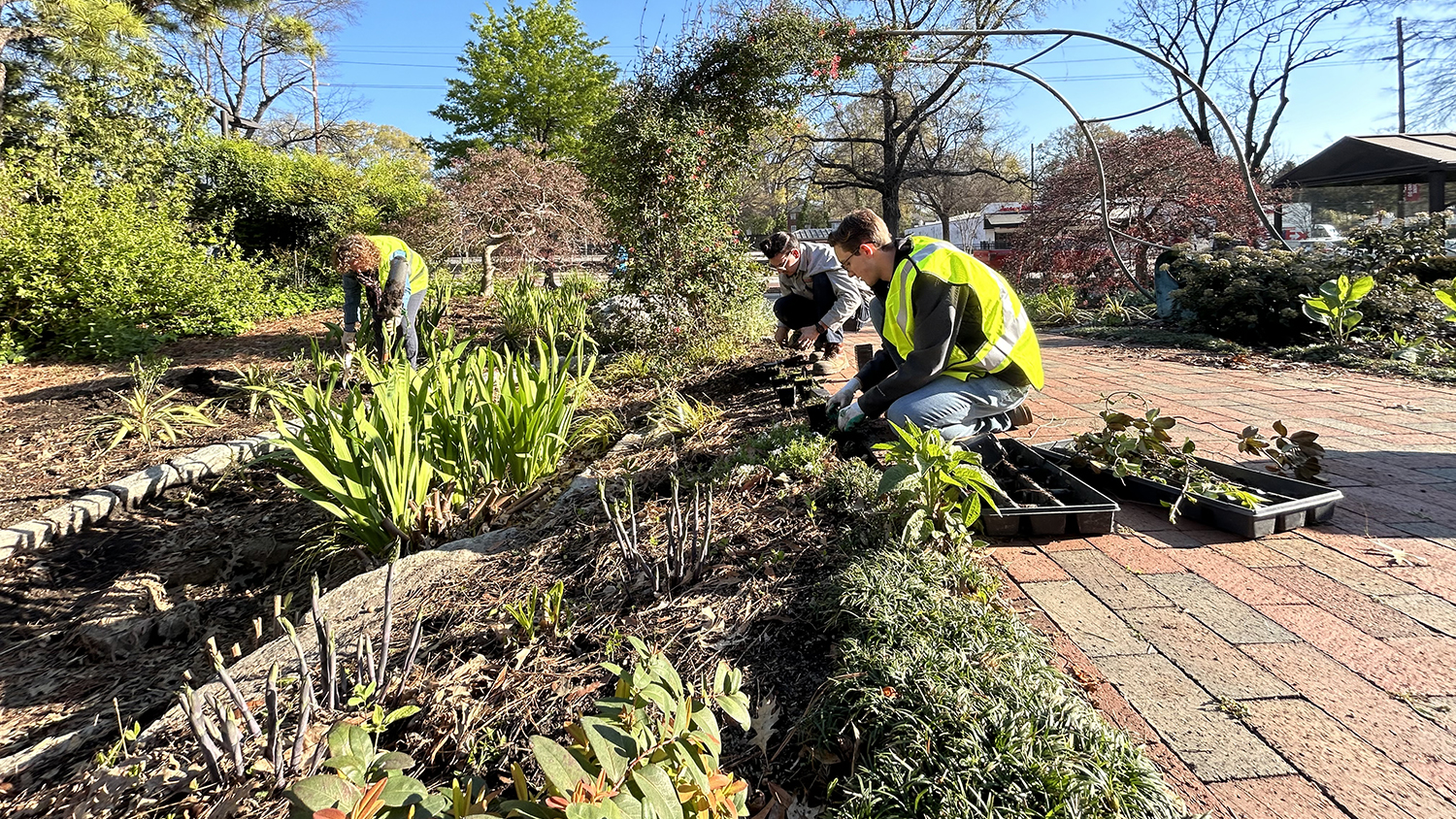Biodiversity project maps urban ants
One of Maya Herring’s favorite things to do is to check out insects living near her Raleigh home. An innovative project from N.C. State University’s Department of Biology is tapping into the 4-year-old’s interest – and that of hundreds of similarly intrigued children and adults – in an attempt to map the ants living in urban areas across the United States.
Starting in July, the School of Ants, as the project is called, armed hundreds of volunteers like Maya and her parents with a simple protocol for collecting ants, sending the ants in and reporting information about their collection online. Some got plastic vials baited with Pecan Sandies crumbs, while others made their own collection kits with index cards, cookie crumbs and plastic bags.
By the end of October, the first-of-its-kind project had received ants from more than 600 people – teachers and students, home-schooled children, parents, senior citizens and others throughout the United States. Now scientists are identifying the ants, logging information about the found ants on an online map and linking to related photos and other information.
School of Ants is a citizen science project – one in which volunteers help trained scientists by doing such things as observing, measuring and recording data. Citizen science has been around a long time: One of the earliest citizen science projects is the Audubon Society’s Christmas Bird Count, which got its start in 1900.
In recent years, though, the concept has gained momentum, and at N.C. State, associate biology professor Dr. Rob Dunn has been building on that momentum. School of Ants is one of three citizen-science projects that his lab has launched in recent months. (More on the other two projects – Bellybutton Biodiversity and the Wild Life of Your Home – is available on the web at www.yourwildlife.org/.)
Dr. Andrea Lucky, a postdoctoral researcher who specializes in ant systematics, heads the School of Ants. Though she’s been to such exotic places as Papua New Guinea to study ants, Lucky is quick to point out that there’s plenty of biodiversity right outside our doors.
Indeed, it didn’t take long before project scientists identifying the sent-in ants came across some surprises: Not only had the volunteers located known ant species in places those species had never been found before, they had also uncovered rare species and found at least one new species.
These sorts of discoveries get at the heart of two things Lucky hopes will come of the National Science Foundation-funded project: First, the project is garnering the kind of information that will help fill in the map of U.S. ants that, up until now, was based solely on museum collections and reports in scientific journals.
“There are hundreds of ant species that are common to areas around people’s homes, and we don’t have good maps where we can pinpoint, ‘These are the areas where those insects are found,’” Lucky said. “Having a more complete map will, over time, be a useful tool in helping scientists measure the effects of such things as climate change, urbanization and introduced species.”
Second, she said, “the project is a not-so-surreptitious way of getting people to think a little bit about the science, the biology, the wildlife that lives around them.
“When people think of biodiversity, they think of a rainforest. That was certainly the case for me,” she added. “But there’s a lot of life going on right outside our doors. It’s something that’s very accessible to people.”
Maya and her parents, Brad and Tia, didn’t find anything around their home that scientists wouldn’t have expected, but they did come face to face with an ant that piqued their curiosity. The odd-looking ant, which they’d never noticed before, had a red head, brown body and black legs.
Brad Herring was a little disappointed when he went to the School of Ants website and found out that the ant was quite common, but that didn’t dampen his enthusiasm for the project.
“I think it’s absolutely an amazing project. It’s very unique, very creative and hopefully inspiring to young folks out there,” said Herring, an educator with the Museum of Life and Science in Durham. “Maya got to hold a test-tube for the first time, and she learned the basics of scientific research and collecting data.”
Herring said that one of the hardest lessons Maya learned is that studying insects sometimes involves sacrificing them. School of Ants participants were asked to put their collected ants into the freezer for a few hours before mailing them in.
“Maya had a hard time putting them in the freezer and then pulling them out and seeing they were all dead,” he said. “But I think through that, she learned something about what’s involved in science.”
For the Herrings, the project wasn’t just a one-time collection: Not only did Brad collect ants, he also created a YouTube video about the project and helped project organizers connect with home-school parents eager for ready-made science lessons.
“With home schooling, when you are having to do all the curricula yourself, having something that’s developed by scientists who really know what they are doing helps us a lot,” Herring said.
Lucky said that developing teaching tools for school teachers and for home-schoolers is among the next steps for School of Ants. She and her colleagues are also looking to take the project global as they find scientists in other countries who are willing to collaborate. And they are hoping to capitalize on project participants’ enthusiasm by giving them the chance to suggest an experiment that School of Ants could implement.
“What we want to do is get people more involved – and not just in collecting but in asking questions and figuring out how to get answers. The goal is to have people involved in every step of the project,” Lucky said.
“This is a bit more uncharted territory as far as citizen science goes. But we want to see where it might lead.”
– Dee Shore


